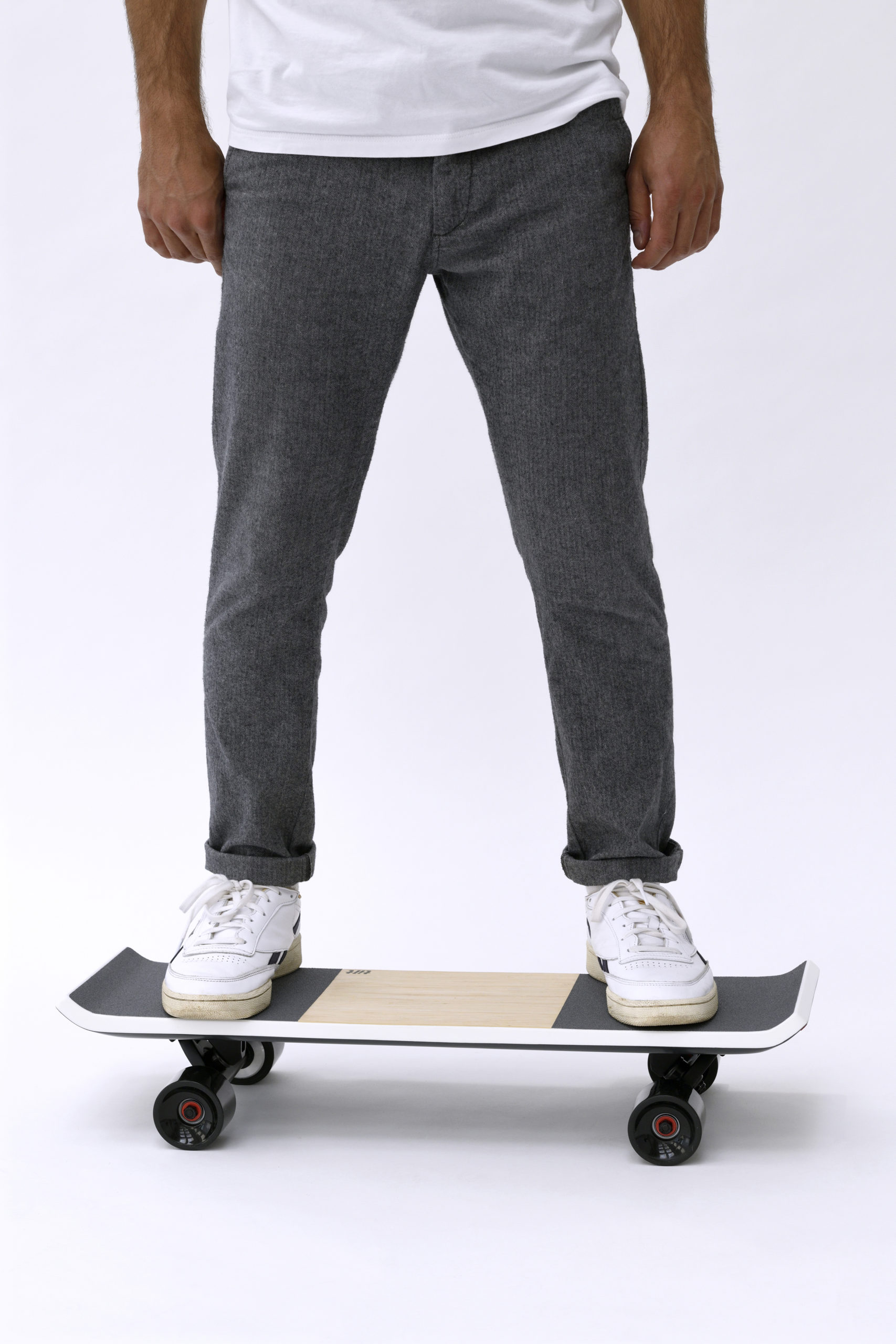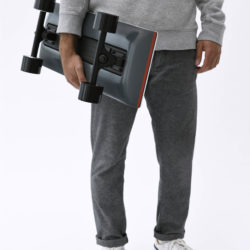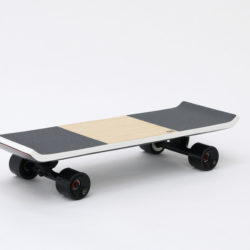tilt
Description
Tilt is a conceptual design of an E-Skateboard that does not require a remote control but is controlled by shifting bodyweight.What is the Topic?
Optimizing and finding a new approach to controlling E-Skateboards. Currently, available E-Skateboards on the market are controlled by a remote control that the user has to hold in his*her hand which affects the user behavior. The goal of the project was to find a design in which the control is integrated and the need for additional remote control is eliminated.
Why does it look like this?
The design is based on how it works. The position of the feet can be seen from the different materials. The shape is deliberately chosen to be very symmetrical since you can drive in both directions and therefore there is no front and rear. At both ends of the board are slight increases, so-called kicktails, which prevent the driver from accidentally slipping. The underside has a bulbous shape to make room for the necessary technology. When viewed normally, the height of the board, which only increases towards the middle, is not very noticeable. The clear and reduced design language should also show that tilt is a new approach for E-Skateboards and is not comparable to current boards.
What is special?
Tilt is controlled by shifting your own body weight. It consists of two essential parts: the board and a substructure with the axes. Both parts are connected via a joint in the middle. With this construction, the board can be tilted back and forth like a seesaw (approx. 3 °). In addition, dampers are used at both ends, making this inclination easy to dose and control. Depending on how hard the driver tilts the board, the faster the acceleration.
What is new?
The integration of the control directly in the board.




